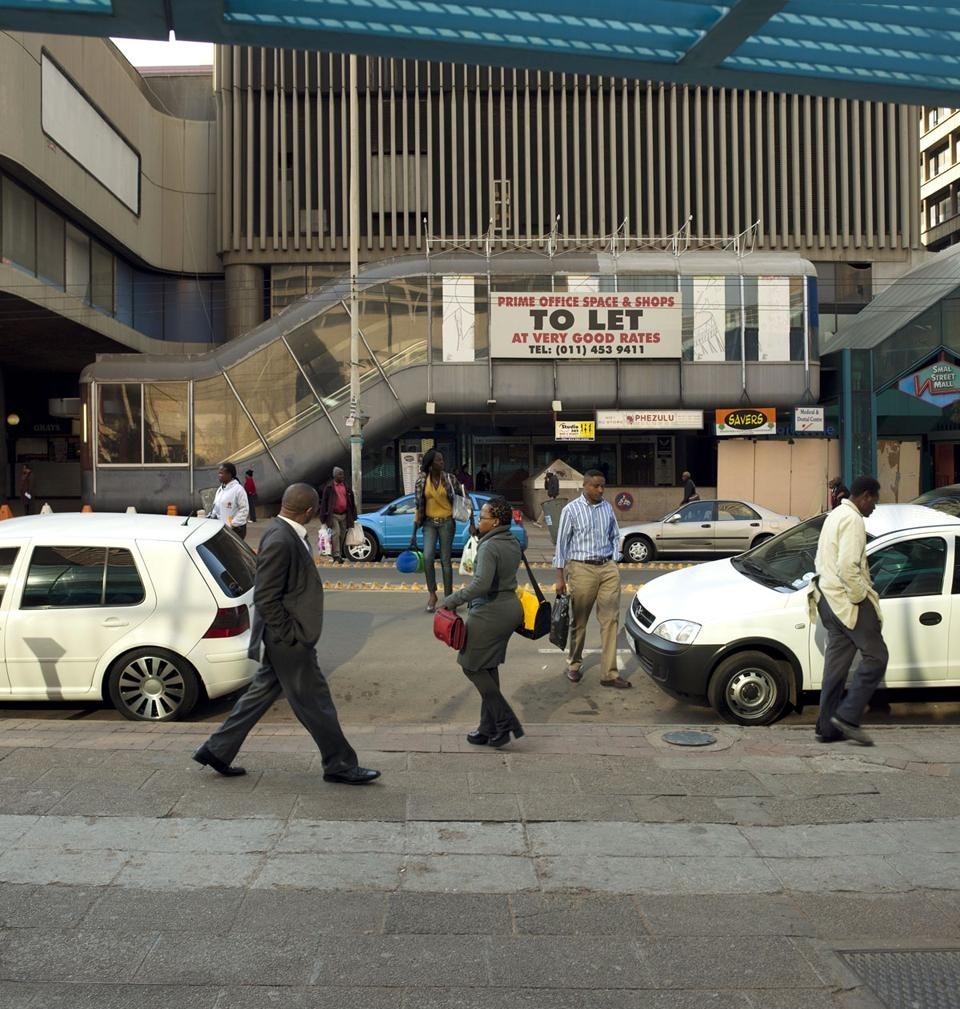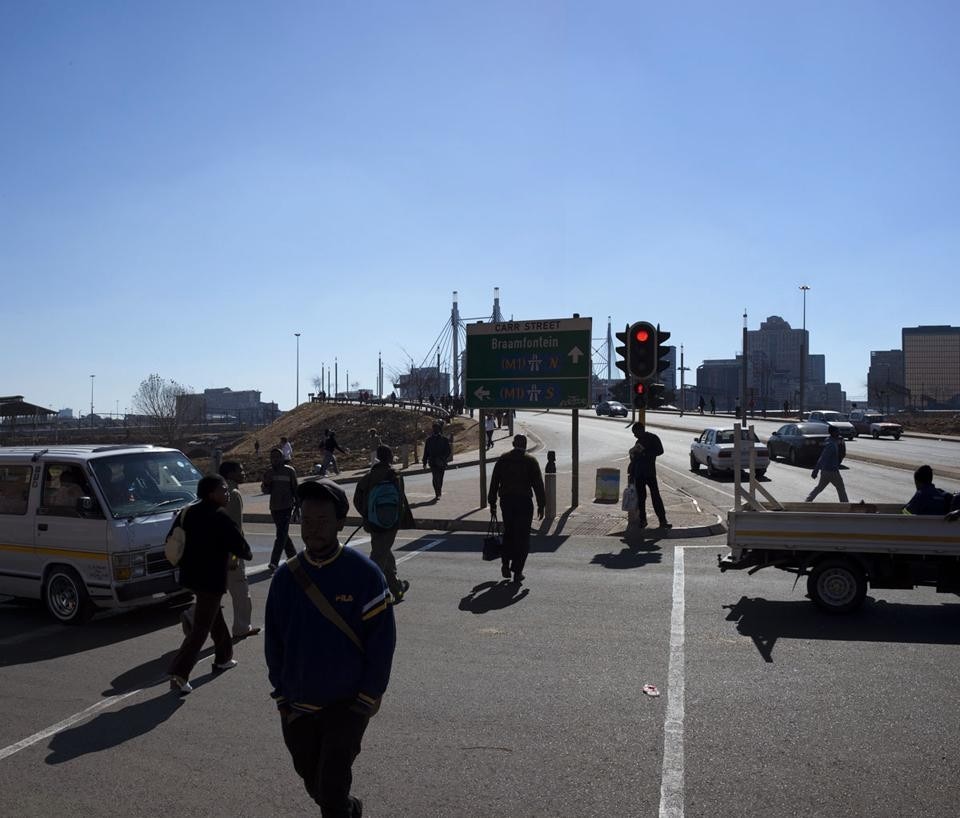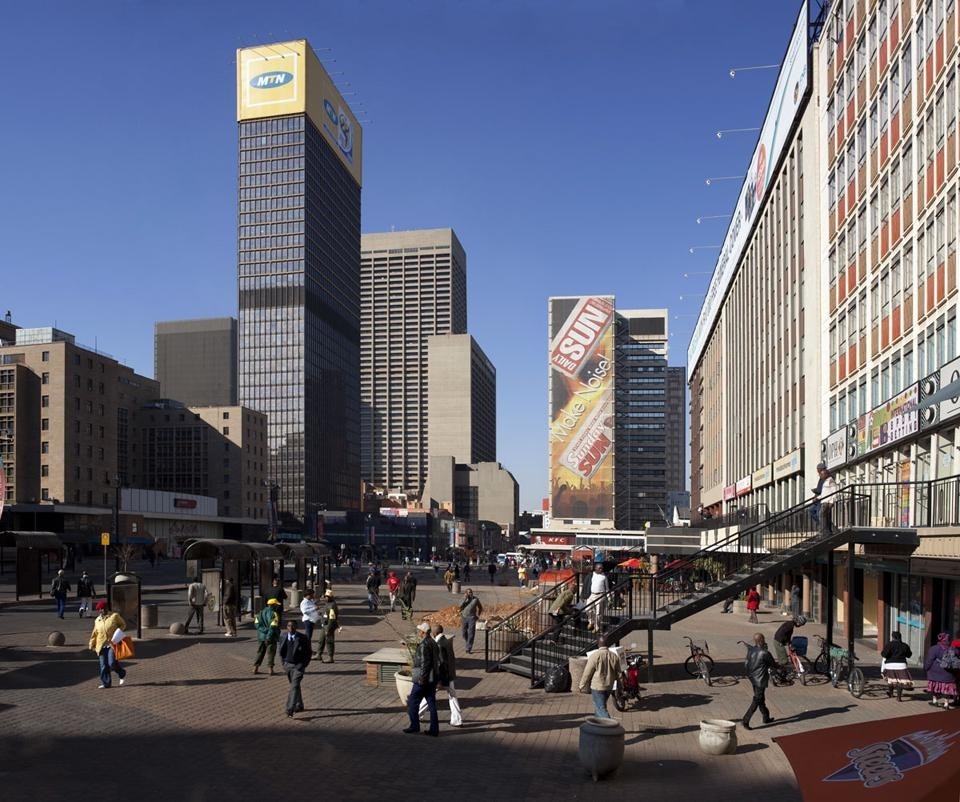Lard has photographed Johannesburg, Luanda, Lagos, Kampala, Lusaka, Dar es Salaam, Nairobi, Lagos, Dakar and Kinshasa. Casablanca, Cape Town and Cairo will be the last stops. In each case, he sets up the camera in everyday public spaces in the course of the everyday. Yet there is an edge to the images. Although the setting is familiar, there is something strangely dense about the activities that take place in them. This uncanny effect lies in the technique that Lard has evolved as his signature over his career, and tested through an earlier project in Chinese cities.
His technique involves a painstaking re-choreographing of the scene captured on film. He explains: "Thanks to my working method, I am able to combine an architectonic approach with a documentary approach. The considered, static image which represents space is combined with a dynamic shot of the scene. This is accomplished by reconstructing the image time and time again from dozens of different instantaneous exposures from the same perspective."


The work will be presented as an exhibition and book in 2013. Lard Buurman can be contacted at lard3@me.com
I neither stage nor style during shooting and I show people there where they were. By playing with time and simultaneity, I can direct afterwards. The photographic moment and social codes between people are reoccurring themes in my work. I play with facts without losing sight of reality.

